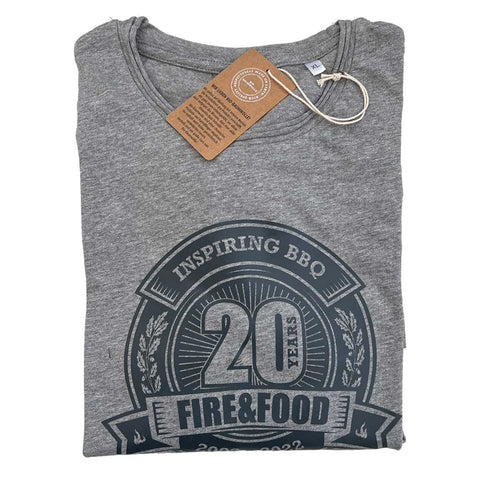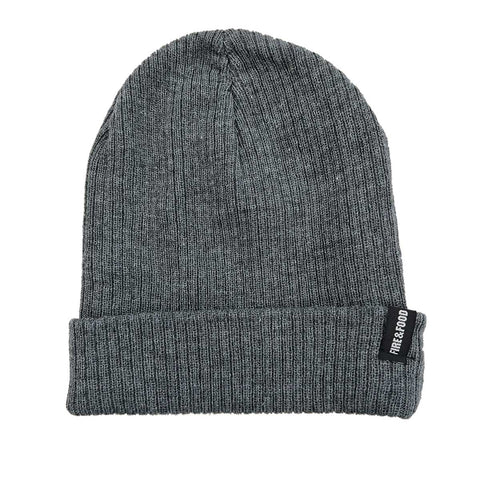
Label Rouge – The French seal of quality
Enjoy like a king in France: Perhaps no other country in Europe is as closely associated with the concept of "enjoyment" as France. The French gather for all the important events in their lives over a good meal. The quality of the food is just as important as the aspect of conviviality. French cuisine is characterized by long-standing regional traditions and peasant-based food production. But even in France, the industrialization of agriculture began to advance in the 1950s. In 1960, a handful of French poultry farmers opposed this trend. They wanted to hold on to their traditional rearing methods and initiated the national quality seal "Label Rouge." For the benefit of the poultry – and our palates!
Whether in daycare, at school, or at home at the dinner table: From an early age, the French learn that good food not only satisfies, but also serves as the glue that binds together socially. A shared lunch or dinner rarely consists of fewer than three courses. A meal thus provides the perfect setting for stimulating conversation. When inviting friends or relatives over for dinner in France, the first stop is often the local weekly market, which usually takes place at least twice a week.
On offer are fruit and vegetables, which – unlike in Germany – are usually cheaper than in the supermarket. Artisan baked goods and sausages, cheese from small farms, as well as meat and fish are also available in many places. These are generally more expensive than in stores, but of exceptionally good quality. When shopping, you can interact with the producers and benefit from their knowledge of the individual products, which you can then apply directly in your cooking and pass on to your children. A cycle that has been proven successful over generations and forms the basis for the great relevance of high-quality food in France across broad sections of society. There is a reason why France's culinary achievements were added to the UNESCO list of Intangible World Heritage of Humanity in 2010, placing them on a par with cultural achievements such as the Argentinian tango, Portuguese fado, and Spanish flamenco. In this context, it is also understandable that an official quality seal such as Label Rouge was able to establish itself early on in France.
Posture good, everything good?
Quality seals are a popular marketing tool for suggesting a certain level of reliability and transparency to consumers and encouraging purchases. In Germany, various organic seals, such as those from Demeter, Bio, or Naturland, as well as the German or EU organic seal and the MSC certificate for sustainably caught fish, are worth mentioning in the food sector. They are highly recognized and considered reliable. One well-known certifier in this area is Ecocert Deutschland GmbH. In addition, various private animal welfare labels exist in Germany that provide information about the type of husbandry, but there is currently no legal obligation to provide uniform and reliable information on the husbandry methods. This is set to change, however, as the current federal government aims to introduce mandatory state-run animal husbandry labeling. This would create a legal obligation to label food of animal origin with the husbandry method of the animals from which the food was obtained. This law is intended to ensure transparency: on the one hand, for consumers, so that they can make informed purchasing decisions and choose consciously between different types of farming. On the other hand, farmers should be able to reliably rely on their efforts to improve animal welfare being truly recognized by consumers and, ideally, rewarded accordingly. However, the crux of all these existing and planned labels, and thus the difference to the French Label Rouge quality seal, is the lack of information about the enjoyment value of the food. This is determined not only by the type of farming and the feed composition, which in Germany predominantly only applies to the "Fattening: Standard" category. The old, tasty poultry breeds are missing, as for decades Germany has relied exclusively on efficient hybrids. This is a problem that also poses hurdles for the various brother rooster initiatives, which prevent the killing of male chicks by rearing roosters. Despite all the love of animals and the best rearing conditions, these roosters are still the brothers of laying hybrid hens – and the development of meat flavor and quality is clearly limited. This, in turn, has a negative impact on marketing opportunities.
The French Way
A handful of French poultry farmers took a different path. As early as the late 1950s, they feared that the accelerated industrialization of agriculture could come at the expense of good taste. They declared war on factory farming and campaigned for official recognition of their traditional rearing methods based on the outdoor rearing of proven, slow-growing poultry breeds. This marked the beginning of the official Label Rouge quality seal, adopted by the French Ministry of Agriculture on August 5, 1960. In addition to various poultry species, the red and white quality seal can now be found on beef, lamb, veal, and pork, sausages, and eggs. It does not identify an individual producer or brand, but simply a specific product that meets established requirements and is constantly monitored.
Label Rouge compared with the current labels in German retail:
Recipe for corn-fed chicken “Coq au vin” style
Professional grill masters Gerhard Volk (left) and Heiner Haseidl have created three special and unusual recipes for Label Rouge poultry for FIRE&FOOD at the Grill Academy in Durbach, Baden. The special features lie in the details of the recipes – but see for yourself!
Ingredients (for 4 people):
• 1 whole corn-fed chicken, approx. 1200 g
• 20 g rapeseed oil
• 40 g strong red wine
• 40 g cognac
• 20 g cold butter, diced
• Salt, pepper
For the spice mix:
• 10 g coarse sea salt
• 7 g crushed black pepper
• 2 g rosemary, chopped
• Chili flakes, amount according to taste
• Zest of 1 organic orange
For the paprika butter for brushing:
• 20 g butter
• 4 g smoked paprika powder La Vera
Preparation:
For the spice mixture, roast the pepper and crush it in a mortar, then mix in the remaining ingredients.
Don't wash the chicken, otherwise you'll spread bacteria throughout the kitchen. Rub the chicken with rapeseed oil and massage the spice mixture evenly inside, out, and under the skin.
Fill a closed poultry cage with red wine and place the chicken on top. Pull the skin toward the back and secure with a wooden skewer. Fold the wings behind the head in the "after-work" position. Melt the butter and mix with the paprika. Prepare the grill for indirect heat at 180–200°C. Place the poultry cage with the chicken in the indirect grilling zone. To check, insert a core temperature probe into the thickest part of the breast and close the grill lid.
Cook the tender bird until an internal temperature of 74°C is reached. Then brush it all over with the paprika butter. Continue grilling until the internal temperature reaches 76°C. Remove from the grill and let it rest until the temperature has dropped to 2°C below the internal temperature. To finish, gently warm the cognac, light it, and flambé the chicken on the poultry rack. Then remove from the rack, carve, and arrange on a warm platter. Empty the entire contents of the poultry rack into a saucepan, stir in the cold butter, and season with salt and pepper if desired. Spread the resulting sauce over the carved chicken. Vive La France!
Gerhard's BBQ tip: "If you cut out the breastbone from the top, the bird will be easier to carve later."





















